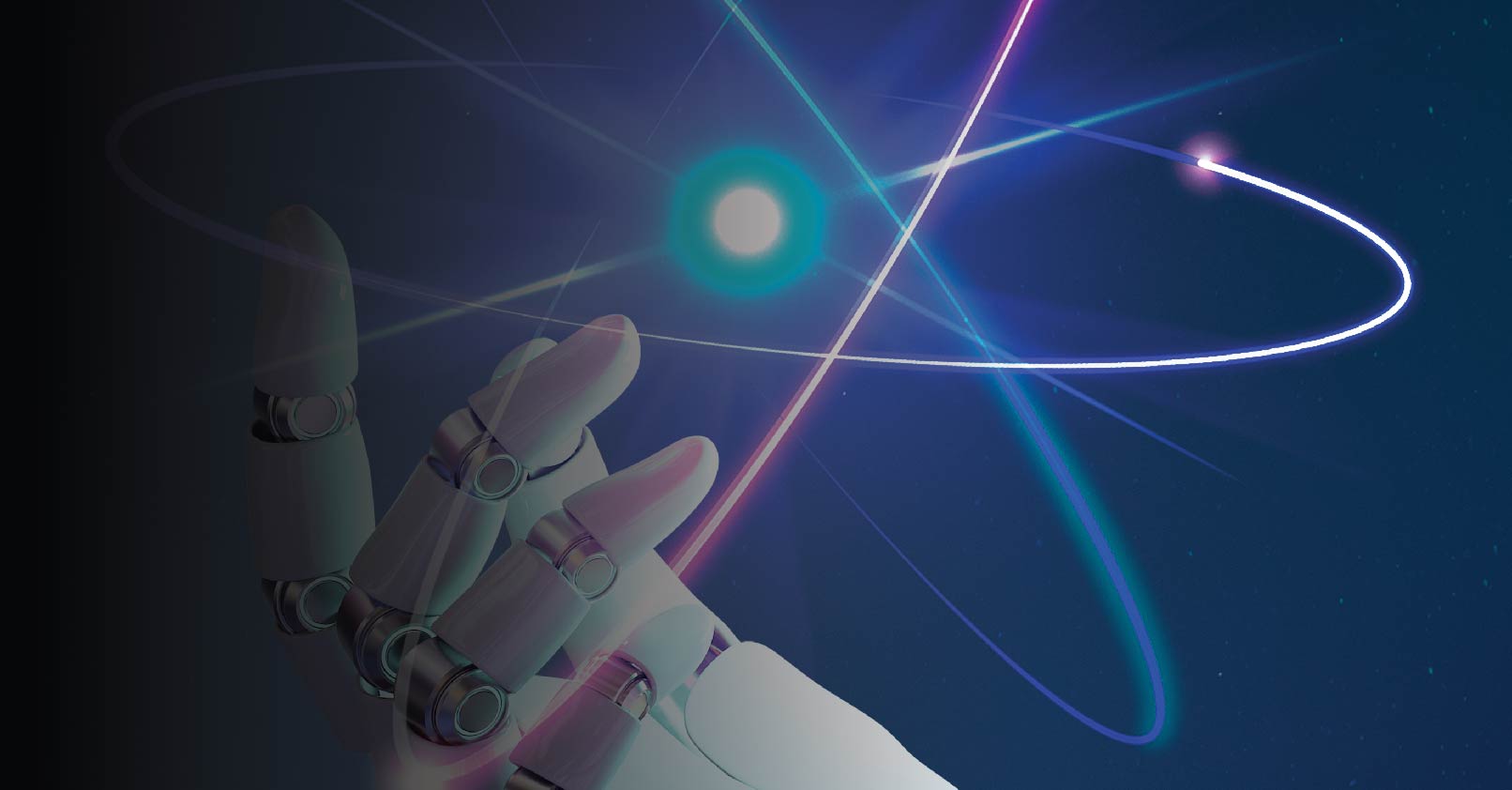Do you know? According to Gartner, Global Robotic Process Automation (RPA) software revenue is projected to reach $1.89 billion in 2021, an increase of 19.5% from 2020, according to the latest forecast from Gartner, Inc. Despite economic pressures caused by the COVID-19 pandemic, the RPA market is still expected to grow at double-digit rates through 2024.
Wow! That is some data to remember. Let’s explore more about RPA and how it changes the tech-sphere we’re living in.
What is RPA?
RPA technology mimics the way human interacts with tech to execute high-volume repeat table mechanical tasks. RPA creates bots (software programs) to complete task orders as required. Robotic Process Automation mimics human actions, whereas AI mimics human thought. It handles mainly physical tasks that require little to no cognitive abilities, as it simply codifies algorithms into software to act as per instructions.
When combined with AI and machine learning, it can capture and work on more information. The two technologies are now increasingly being used in tandem. They are growing in popularity as they streamline processes, provide better customer experiences, and above all, reduces costs of operations and thus improving outcomes for businesses.
Robotic Process Automation Implementation
Once an organization identifies the process suitable for automation, software bots replicate the work effort of human workers. These robots are programmed with instructions to log into applications, perform calculations, enter data into system, execute tasks and log out once the task is performed.
The RPA technology on the basis of performance of work is broadly classified into three categories:
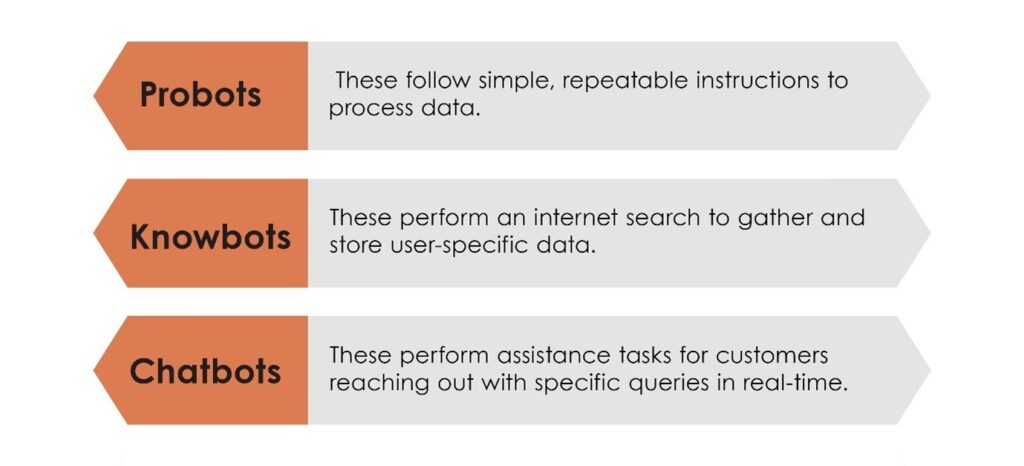
RPA software is quickly implemented, accelerating the organization’s efficiency at large without disturbing its existing laid down infrastructure and systems.
Industry Insights
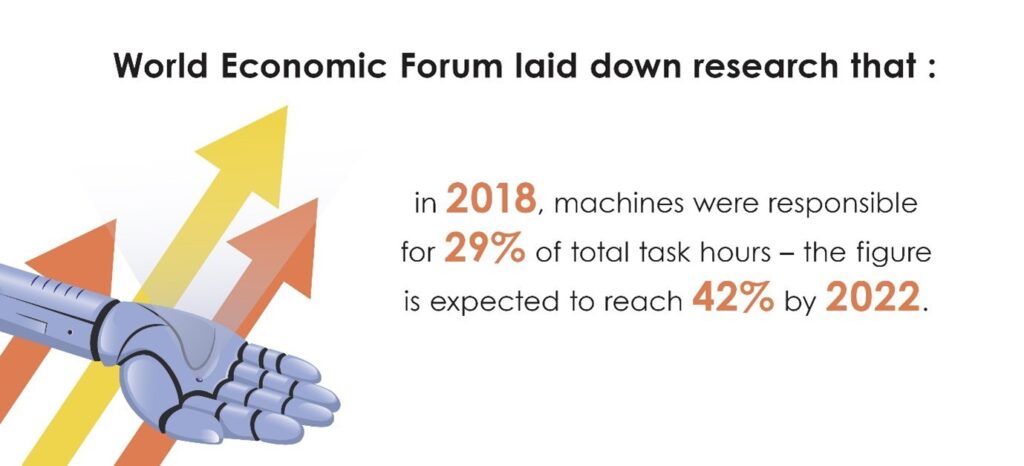
RPA is at the forefront of efforts in industries such as manufacturing, shipping, financial services, healthcare and telecommunications as they include repetitive tasks. Automation is stepping up and refining work processes. It is also being used to automate supply chain processes, after-sales service support and predictive analysis and maintenance.
Application of RPA
RPA applications are also the business use cases of employing automation and faster processing of the business application through robotic software and configurations. It ensures business productivity through automating repetitive processes. Several industry-specific RPA implementations are related to the banking and finance industry, insurance, healthcare, retail, telecom, and educational business domains.
Marketing and Sales Automation
Marketing and Sales automation is a primary use case for RPA; it helps automate the sales application components that deal with lead generation, prospecting, and campaign management. It sends messages, keeps track of statistics, generates reports, and identifies leads ready to move in the pipeline or even ready to buy. The sales and marketing automation helps you convert leads into customers with lesser efforts than you might previously have had to use. RPA is also being collaboratively used with Artificial Intelligence (AI) and cognitive technologies for sales forecasting and helps boost productivity in sales and increases customer satisfaction.
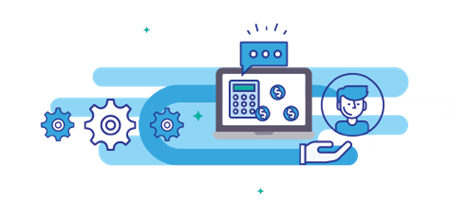
Data Extraction and Migration
Businesses are leveraging RPA for automated web data extraction. This helps them increase speed and efficiency to transform unstructured data into structured and high-quality content. Such distinct CRM system helps migrated data to an ERP system with the RPA bots. Most organizations use their in-house workforce to process the data manually, such as data entry, data format conversion, and data replication tasks. (Read, How big data is adding big values here Bigdata adding value )
Invoice Generation
According to an industry stat, a high volume of invoices arrive in multiple formats every day. Manual invoicing takes between 4.1 and 16.3 working days to process and therefore consumes a large number of human resources. Invoicing involves repetitive tasks performed around a huge volume of data from various sources. The probability of losing documents, human errors and noncompliance are equally high. Robotic Process Automation (RPA) automates repetitive tasks; automated invoice processing is helping save time and human effort. It is infusing higher efficiency with increased accuracy of captured data. By reducing manual efforts, organizations are lowering costs incurred and also significantly increasing the revenue. RPA in invoice automation has enhanced the overall productivity of the organization, cash flow, and stakeholder relations.
Automating Emails
According to research conducted in 2017, the total number of emails transacted in a day topped 269 billion; experts believe that the numbers will grow 320 million by the end of 2021. Sending and receiving email is the formal way of business communication worldwide; marketers specifically seek RPA applications for automating bulk emails for digital promotions. Robotic process automation employs email-based software for automating the process of sending emails to the masses, saving both time and risk of human error.
HR Management and Payroll
RPA is being applied to most of the Human Resource Management (HRM) processes. Every month HR team performs a repetitive task that requires data entry efforts. RPA can easily verify employee data; it is also automating the employee onboarding process, generating the payroll, calculating and processing payment, generating payslips and other documents from end to end to avoid inaccuracies and delays.
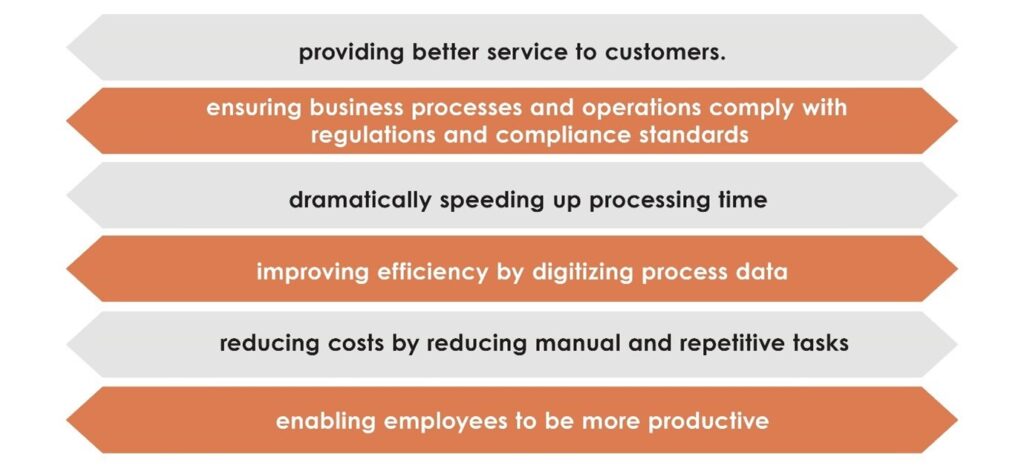
Robotic process automation technology is helping organizations to get on digital transformation journeys by enabling the several benefits.
Worxwide Consulting is a growth consulting firms that helps companies drive digital growth through Sales Transformation. We provide actionable strategies – Sales automation, sales enablement, and sales acceleration – to fuel your business expansion and success. Worxwide is based out of the US, UK, and India, offering bid consulting, sales transformation, user experience, and customer experience design services. Contact our experts for Sales Transformation and Salesforce consulting services.
tx, USA

London, UK

India


